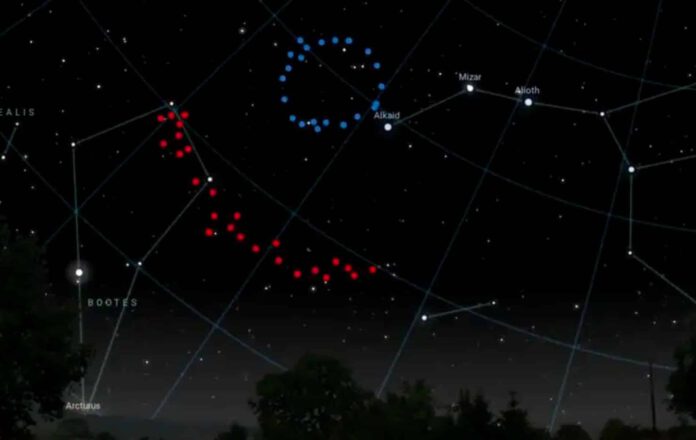
The Big Ring on the Sky: An Unexpected Discovery
The formation, provisionally named ‘The Big Ring on the Sky,’ has a diameter of approximately 1.3 billion light-years(!) and a circumference of 4 billion light-years. Made up mostly of galaxies, this staggeringly large formation was discovered by a student from the University of Central Lancashire, named Alexia Lopez.
With the discovery of The Big Ring on the Sky, Alexia has come across an astronomical mystery, as constructs the size of The Big Ring on the Sky were not, according to current theories, meant to exist.
Not the First of Its Kind
Intriguingly, The Big Ring on the Sky was not the first unusually large structure Lopez discovered. Two years prior, she found the Giant Arc on the Sky, an object spanning 3.3 billion light-years. To further intensify the ambiguity, both The Big Ring on the Sky and the Giant Arc on the Sky are located in the same quadrant of the universe. They are at approximately the same distance from Earth, contemporaneous in time, and a mere 12 degrees apart in the sky.
An Unexplained Phenomenon
“Neither of these two ultra-large structures is easy to explain with our current understanding of the universe,” says Lopez. “Their ultra-large size, striking form, and their relative proximity to each other should tell us something crucial. But what exactly?”
Challenging the Cosmological Principle
It is a mystery. Primarily as structures of such magnitude should not exist according to our current theories. The Cosmological Principle elucidates that the universe is isotropic and homogeneous. This principle suggests that the universe should look the same in all directions and have the same properties everywhere.
“The Cosmological Principle assumes that what part of the universe we can see, gives a fair representation of what to expect in the rest of the universe,” explains Lopez. “So, we’d expect matter to be distributed similarly when viewing the universe on a larger scale.” According to this principle, it is not expected to come across much larger formations in one spot in the universe than can be conceived elsewhere. It is even less expected that scientists would find two, located in the same part of the cosmos.
Overstepping the Limit
“Cosmologists have calculated that the current theoretical limit on the size of formations would be 1.2 billion light-years,” explains Lopez. “But both structures are much bigger: The Giant Arc is almost three times larger, and the circumference of The Big Ring is comparable to the length of the Giant Arc. According to our current cosmological theories, we did not anticipate that structures on this scale could exist,” finishes Lopez. And now, there appear to be two. “The Big Ring and the Giant Arc are two massive formations and even cosmological neighbors, which is particularly fascinating.”
Explaining the existence of these immense structures remains a mystery. “The identification of two exceptional, ultra-large structures so close to each other suggests that they together form an even more exceptional cosmic system,” says Lopez, who announced her discovery of The Big Ring last week at a meeting of the American Astronomical Society. “The Big Ring and the Giant Arc comprise—both individually and together—a significant cosmic enigma.”











